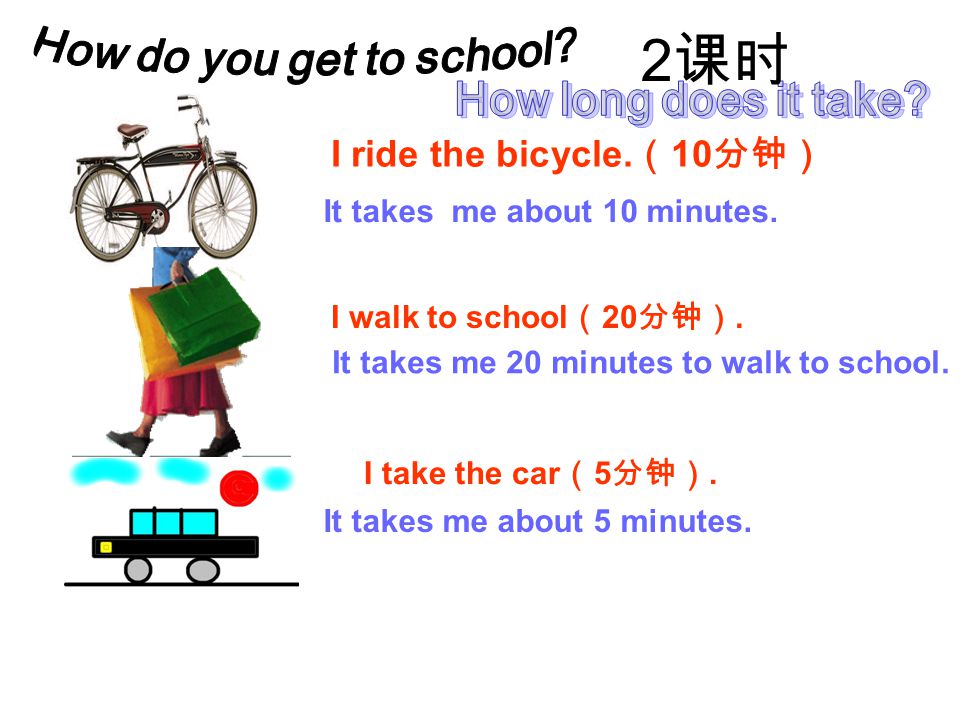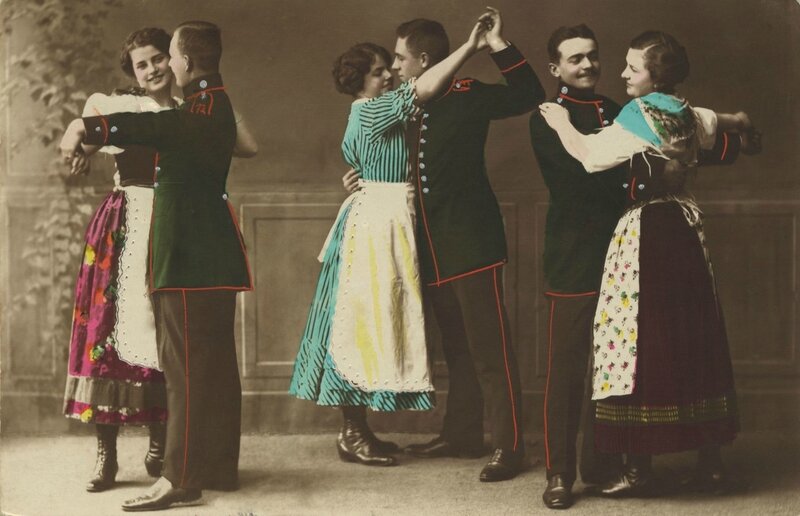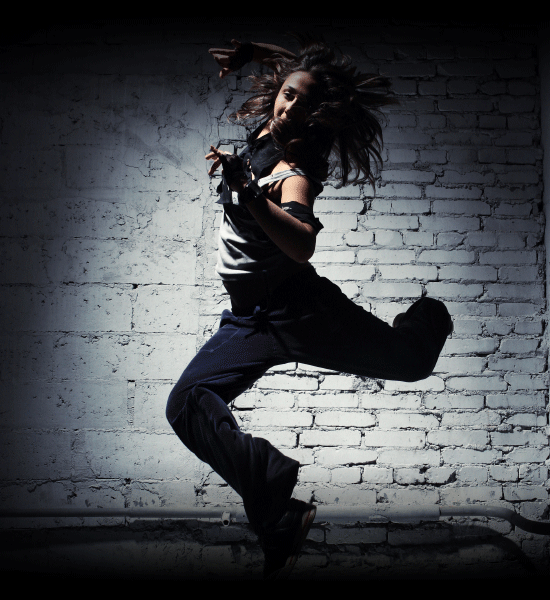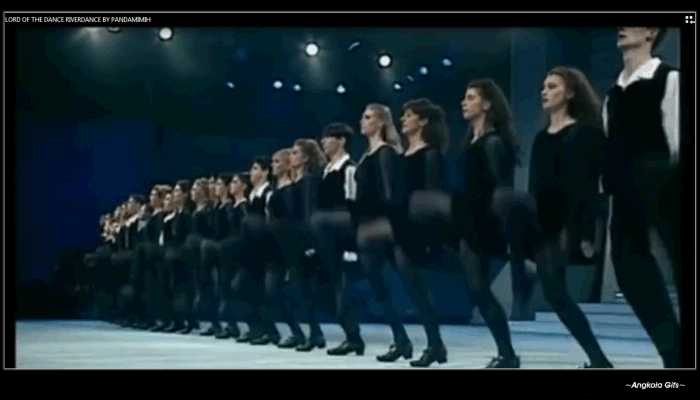How to dance salsa for guys
Learn Basic Salsa Steps
The word 'salsa' literally means 'sauce', usually hot and spicy, and that's definitely how you would describe salsa dance – zesty, energetic, passionate and sexy.
- Basic steps
- Instructions & Diagrams
- Video
- Recommended Video Lessons »
Quick intro
Salsa is a sensual Latin dance, similar to mambo. Both have a pattern of six steps over eight counts of music and they both share many of the same moves.
The great thing about salsa is that just about anyone can learn it. That's why it gained vast popularity in the last few decades and is now danced in nightclubs all over the world. There is a well known saying that is often repeated by dance teachers - if you can walk, you can salsa.
Salsa is the result of combining many Latin and Afro-Caribbean dances, a fusion of Cuban, Puerto Rican and African rhythms. The basic rhythm is quick, quick, slow; quick, quick, slow, using the 1,2,3 and 5,6,7 beats (beats 4 and 8 are skipped). The music is typically around 180 beats per minute, although it can be slower or faster than that.
Basic steps
Salsa is one of the most popular Latin American dances, the main reason being - it's easy to learn. At first glance it might seem difficult, but the truth is quite the opposite - basic salsa steps can be learned with less than 10 minutes of practice.
Only three steps are made for every four beats with one step to each beat and one beat being skipped. The skipped beat is called a tag, a tap, a kick, a flick, or the like. The steps can be from side to side or forward-backward and in circles. When dancing you must keep a straight upper body posture and move your hips as much as possible.
Salsa is danced with partners facing each other. It can be danced in closed or open position. Note that salsa steps are very small. The faster the music, which is usually quite fast, the smaller the steps.
The faster the music, which is usually quite fast, the smaller the steps.
Instructions & Diagrams:
Because Salsa allows for a lot of creative improvisation, many different styles have developed over time. But regardless of different styles the basic steps are essentially the same. As a beginner, you should always start at the beginning.
Basic Steps For Men:
You need to start with both feet together. Remember, practice makes perfect.
- Step forward with your left foot (first beat)
- Right foot in place, weight shifts to it (second beat)
- Step backward with your left foot (third beat + pause on fourth beat)
- Step backward with your right foot (first beat)
- Left foot in place, weight shifts to it (second beat)
- Step forward with your right foot (third beat + pause on fourth beat)
Basic Steps For Ladies:
- Step backward with your right foot (first beat)
- Left foot in place, weight shifts to it (second beat)
- Step forward with your right foot (third beat + pause on fourth beat)
- Step forward with your left foot (first beat)
- Right foot in place, weight shifts to it (second beat)
- Step backward with your left foot (third beat + pause on fourth beat)
Video
OK, let's see how this is done.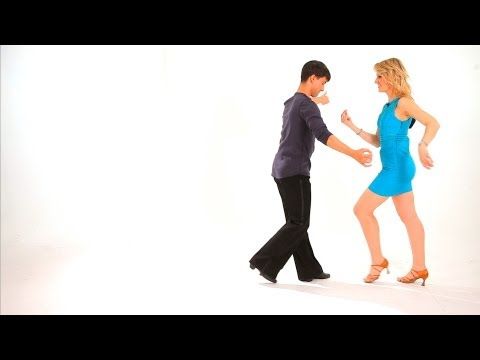 In the following video Leon and Kim will show you the fundamental forward & back basic step from all angles. You will also learn the side basic step. Be sure to master this before moving on.
In the following video Leon and Kim will show you the fundamental forward & back basic step from all angles. You will also learn the side basic step. Be sure to master this before moving on.
more videos »
Take your time to master these steps and when you're ready for more, check out the recommended video lessons »
Salsa Dancing Tips for Women & Men by Dance Dojo
Learning to salsa dance can take years to master so we’d like to help you reduce that time frame as much as possible. Our series of tips for Salsa dancers are designed to help you understand the 80/20 of Salsa: the 20% of technique that will give you an 80% increase in results. That means learning quicker and dancing more efficiently. We’ll help you get your dancing feeling smoother and easier, so you can enjoy social dancing without thinking. Now does that sound good or what?!
Now does that sound good or what?!
We’ve got Salsa tips for beginners to pro’s – they truly are useful regardless of skill level. What’s most important is how fast you can break down your bad habits and pick up the good ones.
Browse the Salsa tip videos below. It’s time to start soaking up some knowledge!
(See full course outline below)
Finding the Beat (FTB) is a free youtube course that has helped thousands of beginner salsa dancers get past the #1 problem they face: how to find the beat in salsa music.
If it helps you, please pass it on to your friends!
Although designed for salsa dancers because salsa music is the most complex, these lessons will help you find the beat in ANY type of music.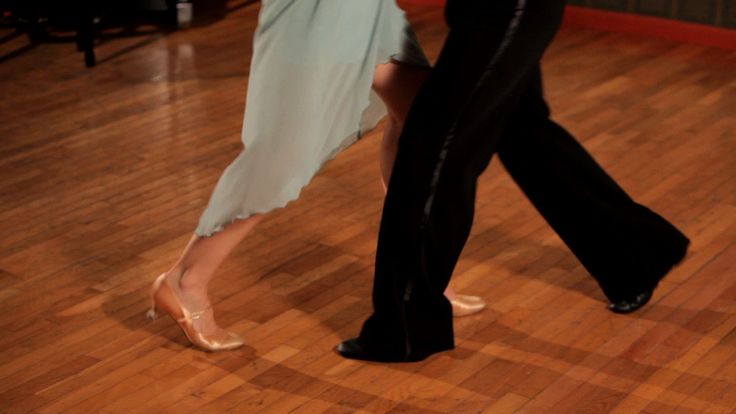
I’ve broken down the process into 4 logical steps:
- Counting non-salsa music (easy music)
- Moving to non-salsa music
- Counting salsa music (more complex)
- Moving to salsa music
By the end of this course you’ll be able to…
- Understand the structure of music
- Count music
- Hear the beat in salsa music
- Find the 1 in salsa music
- Stay on time while dancing salsa with much higher success
Here’s the Finding the Beat youtube playlist and you can find the entire course outline below.
Read more →
So, you’re a beginner dancing with another beginner or maybe you’re more of an intermediate to advanced level dancing with someone who’s newer than you, less experienced than you, or someone who has relatively little technique and who may or may not have ever taken classes before. How do you make sure you and your partner have fun and you keep your leads clear? Today we’re talking all about how to adjust your lead for beginners.
How do you make sure you and your partner have fun and you keep your leads clear? Today we’re talking all about how to adjust your lead for beginners.
Read more →
The Magical Concept of Cause & Effect
Today we’re gonna help you become a smoother lead by talking about a magical concept called “cause and effect.” Now, why do I say it’s magical? Well, if you use cause and effect you can do less and get better results. It’s going to make your lead smoother and the follow’s job so much easier. It’s going to make you’re you’re dancing look better, feel better and the ladies (the follows) are going to love you for it. They’re going to appreciative it a ton.
Read more →
Hey everybody, Patrick here once again from the Dance Dojo.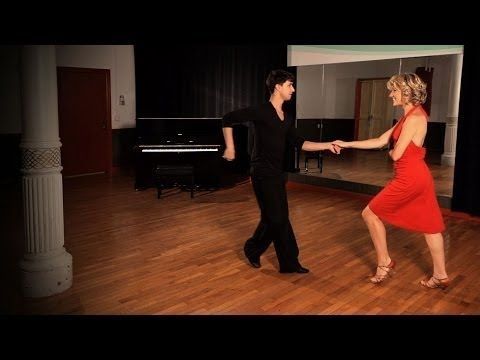
Today, I’m going to be addressing a question we had from one of our online students and that is…
“What is the fastest way to progress my salsa dancing?”
Read more →
We frequently get the question, “When should I start social dancing?” Our answer is always the same. Do it immediately. Read more →
When learning how to salsa dance, we often worry too much about our partners and not enough about what we’re doing ourselves.
In this tip we’ll explain how, as a follow, worrying less about the lead and focusing on framing yourself can actually improve your ability to respond to his signals.
Read more →
When dancing Salsa, the rule of thumb is to keep your elbows in front of and outside of your hips at all times.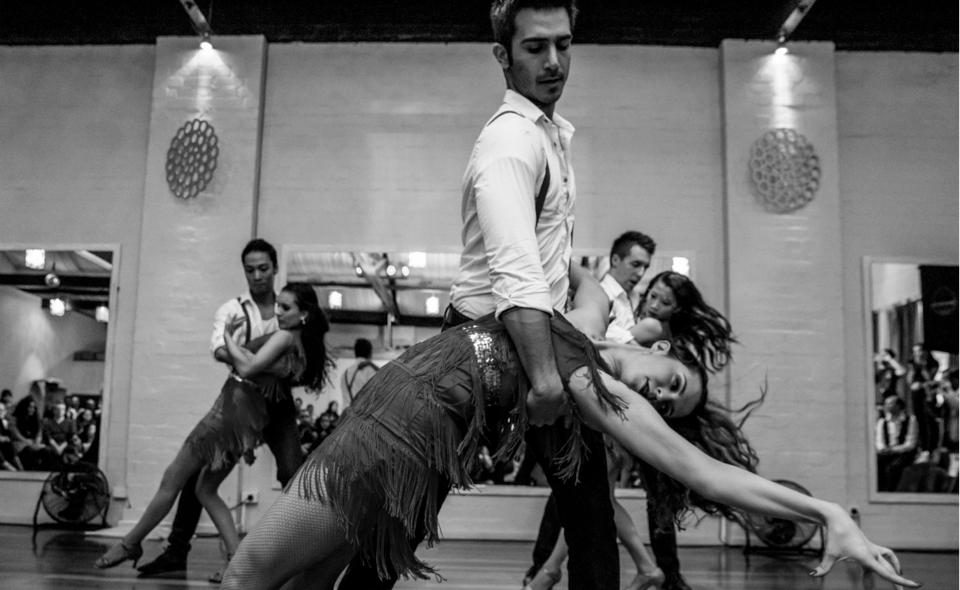
Regardless of which direction you choose to lead (or are being lead in), maintain that proper elbow-to-hip relationship and it’ll enhance the success of your dances. Why? Read more →
Once upon a time, not so long ago, Patrick was dancing with a male student who was using an excessive form of the “spider man grip.” It felt forced, seemed unnecessary and fuelled this tip. Read more →
Raise your hand if you can’t wait for your next mediocre dance!
*No hands move* – that’s what we thought.
As Salsa dancers we turn hundreds of times per night (some nut jobs probably hit the 4 digits), but despite this staggering amount of repetition, SO many of us are losing our balance and limiting ourselves from experiencing incredible dances.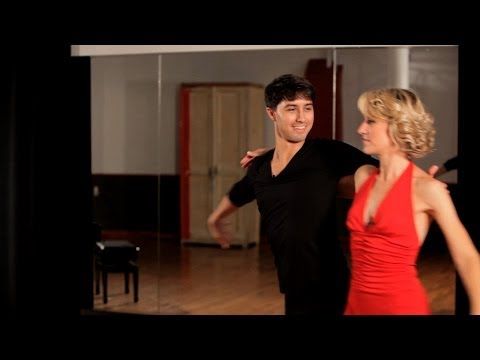 That’s insane!
That’s insane!
Simply put, if you’re off balance, you’re missing out big time. It’s time to end this madness and unlock your ability to turn better. Sound good?
This quick tip on salsa turn technique is going to change the way you practice your turns and it’s the perfect test to find out if you’re slacking off! Read more →
If I asked you to complete this sentence: “Practice makes….”
What would you say?
Perfect. Right?
WRONG.
Read more →
“I am a man and I like to dance salsa” - Outdoor Activities - Fitness
When my wife's friends hear these words about me, they ask her with wild eyes every time: “How did you drag him there??!” But it didn't drag! I went to salsa school myself. Yes, and then at home, under the video lessons, he began to train himself. And I pumped up applications in the iPhone and iPad for myself and my wife.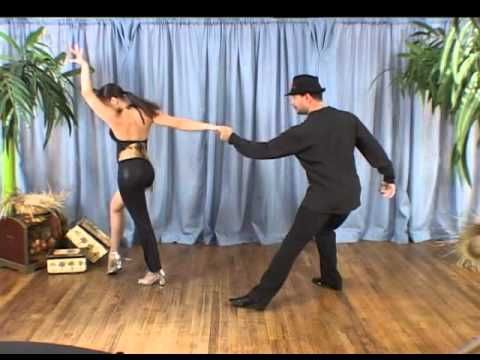 And now I've been going for half a year: both to classes and to salsateca. You don't need to drag anyone to a normal school of salsa and bachata - everyone has to go on their own.
And now I've been going for half a year: both to classes and to salsateca. You don't need to drag anyone to a normal school of salsa and bachata - everyone has to go on their own.
And now I will explain why
The scoop brought us up: there are no pair dances in our country!
I am 30 years old. For the first 15 years of my life, society in the face of classmates and clear-cut boys from the entrance sold me the idea that dancing is not cool! Real guys dance only in discos to harsh rhythmic music, trampling their feet and waving their arms to the sides. Have you heard the song "Arnold Schwarzenegger Doesn't Dance"? So, if a guy is engaged in dancing, then he’s not like Schwarzenegger at all, but a sucker and a weakling who cannot go to normal karate or kickboxing classes.
Something changed at the age of 20-25. Pair dances have become not so rare. Shows showing ballroom performances were played on TV with might and main: either on Eurosport, or on Channel One, something with stars.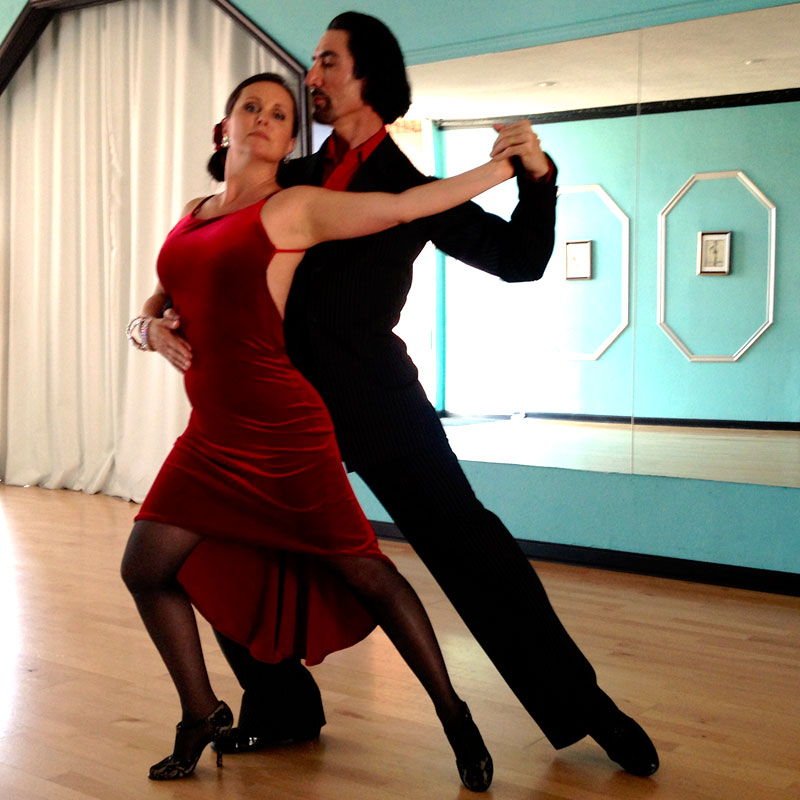 At the same time, the dancing men were clearly associated with effeminate smiling dudes in black shirts unbuttoned to the navel, and the same black tight-fitting trousers. Look on the Internet for a clip from the Comedy Club “I'm a baller” - I laughed several times while reviewing it!
At the same time, the dancing men were clearly associated with effeminate smiling dudes in black shirts unbuttoned to the navel, and the same black tight-fitting trousers. Look on the Internet for a clip from the Comedy Club “I'm a baller” - I laughed several times while reviewing it!
Few men want to become outrageous dudes and bury their brutality. I don't want to either.
My wife wanted to learn how to dance salsa and bachata. It was for her that I went to bachata classes for the first time. The trick is that in normal schools, salsa and bachata are taught according to Cuban or Dominican (I don’t really understand) programs. And the Cubans and Dominicans are cheeky guys, they like to burn and neigh))) What we actually did here from the very first lessons. After watching a few clips from YouTube, I calmed down and realized that I would not become an effeminate frilly dude. AT normal salsa schools don't have them.
Salsa and bachata are the most common club dances in Moscow . It is a fact! I learned to dance, and it dawned on me: “Oh, they are dancing here in Pancho Villa, in Casa Agave and in other crazy clubs where we went for a walk at night with friends for several years in a row!” It became fun not just to sit all night at the table, but periodically get out with his wife on the dance floor under the intrigued glances of friends.
It is a fact! I learned to dance, and it dawned on me: “Oh, they are dancing here in Pancho Villa, in Casa Agave and in other crazy clubs where we went for a walk at night with friends for several years in a row!” It became fun not just to sit all night at the table, but periodically get out with his wife on the dance floor under the intrigued glances of friends.
Salsa dance is a regular and soft exercise that keeps the body in good shape.
I am a typical “office plankton” in terms of lifestyle. I have a good job, a very interesting job that consumes a lot of time. For a serious sport of time and special desire, I confess - no. This thought has been gnawing at me for a long time: youthful karate and swimming lessons, which once gave tone to the body, have become forgotten by the muscles. Now salsa and bachata is a fan that makes me lift my ass two or three times a week and sweat for two hours. And such aerobic loads also regulate weight well and seem to be useful for the heart.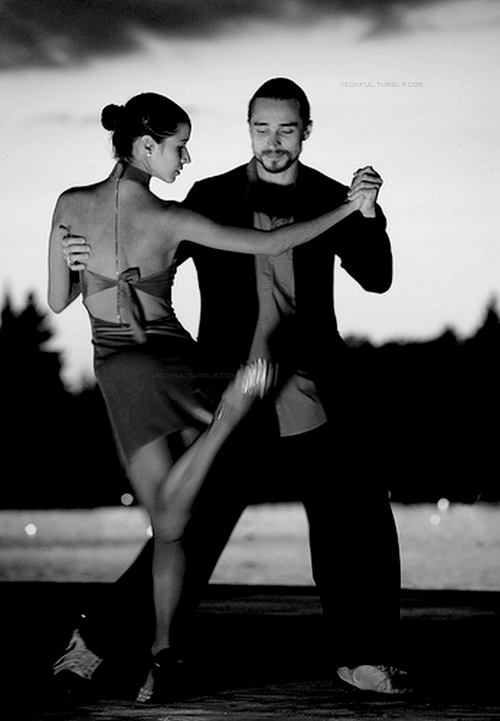
Salsa and bachata lessons really develop your back. Both flexibility and tone. You have to move so often and so briskly that every other day the entire spinal column aches pleasantly. Perfect posture quickly became a habit. Guys, it's extremely nice : walking down the street and feeling what an even, confident and tall guy you are! Like +5 to charisma))
Basic principle: “I am a man — I lead”!
More on confidence. Guys, I repeat once again: salsa and bachata are really masculine dances. The more you practice, the more confident you become. I am the initiator. I decide what to dance, I decide which figures and in what order to dance. I'm leading, the woman is walking. I'm not a sexist, but the initiative is in me by nature! This is what I like about dancing. And this is what my woman likes about me!
The brain both works and rests
Salsa and bachata classes are a good way to unload the brain from work. And a great way to load the brain with remembering shapes, orientation in space and reaction speed. You have to think fast. I confess that the figures are remembered a little harder for me than for my wife - here she is cooler. But I try)) I cope with it at least as well as other guys in the group. I also read somewhere that dancing classes reduce the likelihood of senile dementia by 75% or so ...
And a great way to load the brain with remembering shapes, orientation in space and reaction speed. You have to think fast. I confess that the figures are remembered a little harder for me than for my wife - here she is cooler. But I try)) I cope with it at least as well as other guys in the group. I also read somewhere that dancing classes reduce the likelihood of senile dementia by 75% or so ...
Salsa is more than dancing
The social circle is expanding. It is a fact. Salsateca, parties and classes - everything is positive, with jokes and frank witticisms. This is a fresh stream in life, this is a movement, these are smart and enthusiastic people around.
Another salsa and bachata are crowds of beautiful girls with slender figures! The concentration of pretty and fit girls in classes and discos is off scale. And any man is pleased to be in such a society.
At such moments adrenaline and endorphins go wild!
It's funny, if you catch music in a club according to your mood, you go to the dance floor with your wife, and the body obeys perfectly, and the figures line up perfectly. You wind up, and your arms and legs begin to move on their own. That's when you turn on the “prankster and hooligan mode” and start inserting some interesting chips into the dance. You feel that you are playing a game with a woman : you lead her, you look at her. Then you catch the eyes of other people and smirk like “I am the King of the World”)))
You wind up, and your arms and legs begin to move on their own. That's when you turn on the “prankster and hooligan mode” and start inserting some interesting chips into the dance. You feel that you are playing a game with a woman : you lead her, you look at her. Then you catch the eyes of other people and smirk like “I am the King of the World”)))
I wrote this article because I wanted to dispel a few myths about dancing that used to sit in my head. And also tell you what a dance school in Moscow is. Now salsa and bachata for me are wild fun, sports and charisma training.
Take action, men!
Women love confident people.
As one ingenious advertisement said: “Yesterday you told yourself “Tomorrow”! (c)
12 Life hacks to quickly learn how to dance from Mamita Dance
Dancing
Author: Pavel Collection
Psychologist, Teacher of Salsa and Tango
Dances
Author: Pavel Pavel Pavel Pavel
Psychologist and Tango teacher and Tanga
At the start, you always want to get a quick result.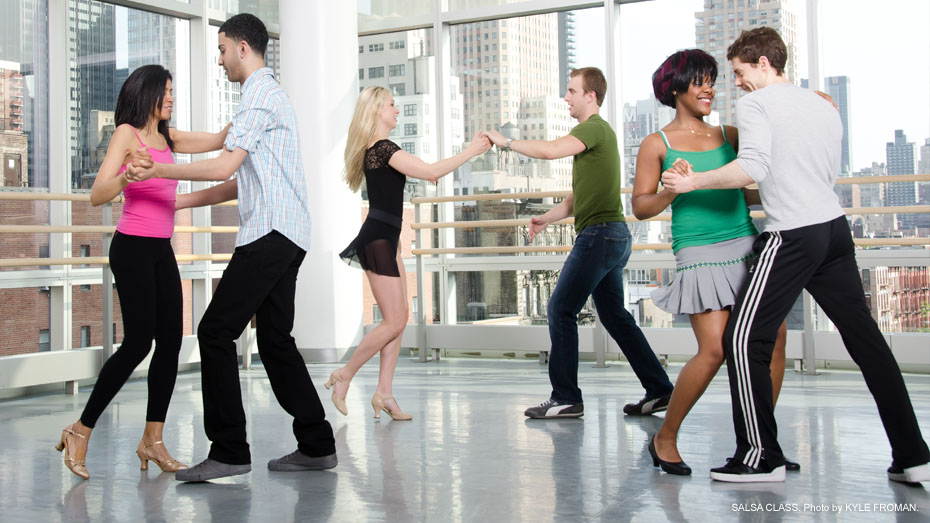 When it doesn't happen, the hypothesis arises that everything takes time. After a conditionally acceptable time, humility comes to mastering pair dances, which, perhaps, is not given, and I will just do what I learned somehow.
When it doesn't happen, the hypothesis arises that everything takes time. After a conditionally acceptable time, humility comes to mastering pair dances, which, perhaps, is not given, and I will just do what I learned somehow.
This is the most common story of those who believe that the mere act of attending a pair dance class is enough to learn how to dance.
Absolutely not. If you want to really dance well, you have to make an effort outside of the dance class. A good teacher will definitely be needed, but the initiative should be on your side.
1. Listen to music
The most common and accessible advice that is given already in the first lessons. And it definitely works. Music creates a certain atmosphere of the dance and intuitively you want to move to it. It doesn't matter where you listen to music - in the car, on headphones while walking or doing household chores.
An addition that will help you dance better is your active participation in the music.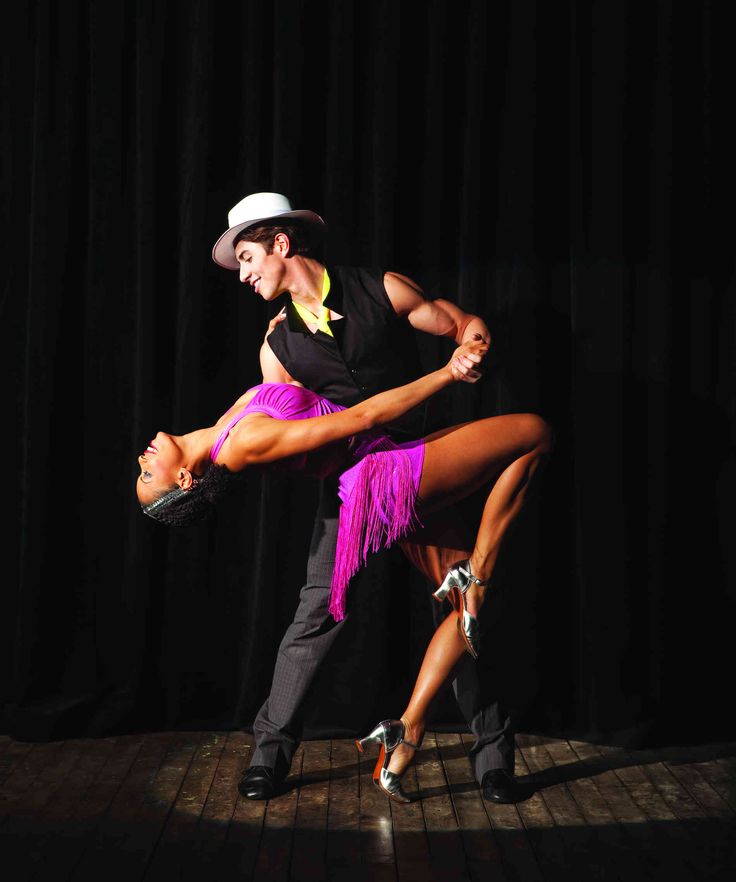 Sing along, dance or simply beat musical accents with any free parts of the body. In the subway, for example, it is enough to tap out bright moments with your fingers, in the car to sing along with sounds, and at home you can jump for pleasure.
Sing along, dance or simply beat musical accents with any free parts of the body. In the subway, for example, it is enough to tap out bright moments with your fingers, in the car to sing along with sounds, and at home you can jump for pleasure.
2. Watch videos of good dancers
It's complicated, but also obvious. It’s more difficult, because without recommendations from more experienced dancers, unfortunately, it’s not so easy to find a good quality video on the net (I mean not the resolution quality, but the content itself).
Meaningful viewing of the video is to form an understanding of HOW the dancers make this or that impression on the partner or the viewer. Technology is at the heart of everything. Understanding how the pros do it is a big step forward.
It is important to distinguish a show from a disco dance, a choreographed performance from an improvisation, a stylized dance from an authentic one, etc. Ask for recommendations and dance instructors will always upload a couple of videos of worthy landmarks.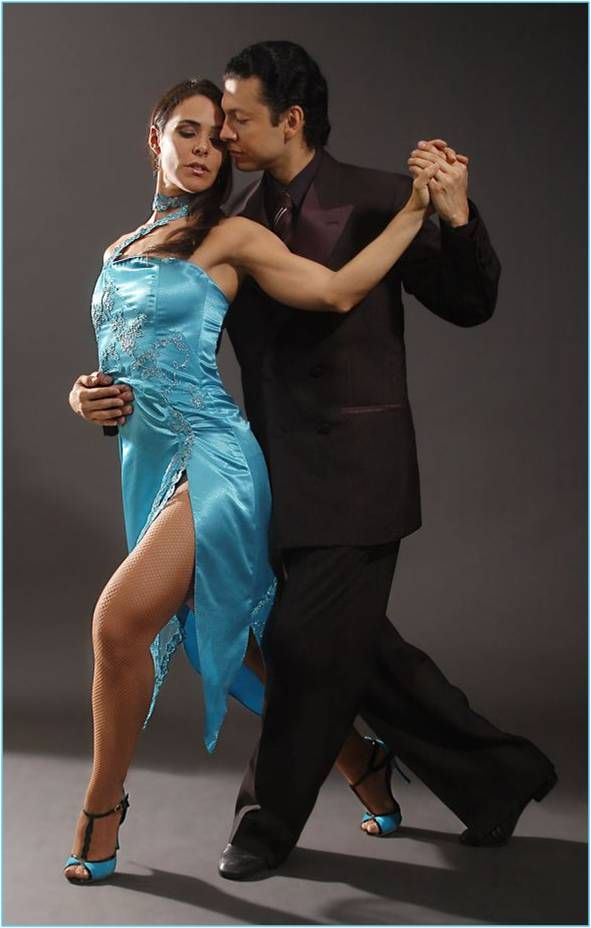
Tango Z. Showreel.
Online modern tango courses
Tango nuevo is the most advanced version of tango. We can quickly learn to dance from zero to a steep level.
| View details |
3. Dance in salsatecas/milongas/discotheques
A very delicate moment when it is worth coming to the first party. From a technical point of view, most students in 1-3 months have a sufficient set of figures and techniques to come and dance calmly. Psychologically, the same moment can be stretched out for an indefinite time. After all, it is imperative to “not lose face”, “learn more figures” and be sure what to do in case “there is an unfamiliar movement”.
In fact, the party goers don't care (except for a small layer of unprofessional teachers who want to help inexperienced dancers by treating them as customers in the future). It is important to come and try dancing after a month of classes. You can only with friends or guys from your group. This will be enough to feel the adrenaline and inspiration from the dance.
You can only with friends or guys from your group. This will be enough to feel the adrenaline and inspiration from the dance.
4. Dance with partners or partners not of your level
The conventional wisdom that you need to practice in groups of your level does not withstand the test of experience. Perhaps now your eyes widened in surprise, and you want to meaningfully read the phrase again. Yes, you saw everything correctly: when you dance with a partner of your level, you don’t grow anywhere.
It's important to understand that not only does it work one way, and you need to dance with cooler dancers, but it works even more effectively the other way. It is no coincidence that teaching pair dances dramatically raises the level of the teacher himself. You have an endless stream of very beginner dancers.
How it works. A more experienced partner needs to be "stretched". It's easy and obvious. With beginners, you need to take more initiative on yourself, see the general pattern of the dance more widely, turn on and insure more, try to be an example and be more careful.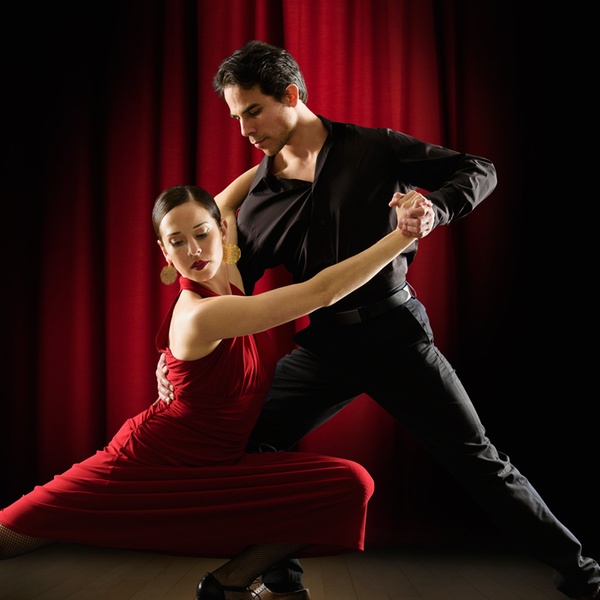 The quality of interaction begins to grow significantly. And wonderful partners too.
The quality of interaction begins to grow significantly. And wonderful partners too.
Dancing with partners of your level doesn't make you grow. Dance with beginners and more advanced dancers
Dominican Bachata Women's Style Online Course
Want to learn how to hypnotize those around you with the most appetizing part of your body? On the course we will tell you all the secrets.
| Interesting |
5. Learn to dance for a partner and for a partner
Turks and Argentines are one of the best partners in the world. In Russia, partners are highly valued. Why? The answer is simple. In Argentina and Turkey, it is not questionable for men to ask another man to lead in one piece or another and give feedback on the quality of the lead. For them, it will be a great shame to hear moralizing from a partner, or even more so to be known in the community as an insecure partner.
In Russia, due to the constant, often far-fetched, opinion that there are more women in pair dances, partners calmly get up and study their partner's part. Such partners then grow into very cool dancers and teachers. In no case do this at parties, only in class. Here we are talking only about the learning strategy. At parties, be yourself.
Such partners then grow into very cool dancers and teachers. In no case do this at parties, only in class. Here we are talking only about the learning strategy. At parties, be yourself.
6. Do not memorize the links
Always try to look deeper and understand the through principle and idea of movement. Understanding what and how is done will make it possible to independently generate any sequences and chips.
Human memory is limited and there will always be a moment when something will escape and your repertoire will be limited by the size of RAM.
In Argentine tango, for example, there are seven levels of movement construction that, when mastered, will allow you to make millions of combinations. And how many dance sequences can you really remember? In rueda, more than 150 figures dance in a rare circle. It's hard to keep more in mind.
7. Develop your body
Many years of experience in teaching couple dance shows that as soon as everyone pairs up in a class, any progress in individual style ends. But it is the individual style that distinguishes everyone at the disco: partners change, and style is always with you.
But it is the individual style that distinguishes everyone at the disco: partners change, and style is always with you.
The body as the main instrument of dance must be very plastic, responsive and emotional. Surprisingly, not all pair dance schools have a general physical warm-up. It is vital to tune the body and understand how it works.
You can always train extra and concentrate more on the basic steps, as their true value is in the quality of body work. The sequence of steps is, in fact, the simplest thing that can be in pair dancing. The quality of individual performance determines the craftsmanship.
8. Try on the images of inspiring dancers
A psychological life hack for those who have already mastered the steps, but still feel that there is not enough brightness and drive. Most are terribly afraid of being someone else's "clone". Here the action is the same as under the influence of hypnosis - the more you resist, the more you plunge into an altered state of consciousness.
With a high degree of probability, you are already dancing like someone else's "clone". A meaningful fitting of someone else's image is that you mentally take the image of the one who inspires you (inspiration is critical in this case) and "put on" yourself. Then you start dancing and trying to feel in general how it is to be able, for example, to be the best partner or the sexiest partner in a disco. This is much more difficult than it seems. But it works extremely efficiently.
9. Dance to offbeat music
Habitual rhythms keep you tight. Tango salon or speedy timba leave little room for experimentation and fantasy. Pattern dancing is always noticeable and is reserved for beginners.
The truly new is born outside of the usual. Look for places to experiment. If there is no place, organize self-training. The main thing is not to get carried away, because music determines the style. We bring something new to pair dances, rather than trying to change them.
Search, improvise, don't be afraid to go beyond, develop in different directions, be inspired by music atypical for the style
10. Try your hand at basic dance directions dances exist according to their own non-choreographic laws.
This is the deepest delusion, which has turned into a ceiling for the qualitative development of partner dances. After all, all professional dancers, for example, in salsa or bachata, build their ideas on the basic choreographic principles.
Do not think that choreography is applicable only on stage. Any meaningful movement of the body can be choreographic. In general, try classical or modern choreography. Basically, hip-hop can work too.
11. Look for battle sensations
Pair dances return us to an active position of manifestation of our body. As in the days of our ancient ancestors, we impress the members of the opposite sex by how dexterous, hardy, sexy, etc. we are. Modern laws of the jungle in the entourage of large cities.
we are. Modern laws of the jungle in the entourage of large cities.
If you look around the dance floor, it becomes clear that the majority are clearly herbivores (not in the sense of vegetarians, but in relation to those around them). I am sure that predators are always more interesting in terms of the attractiveness of the image - try to find a counterbalance among herbivores, for example, a cat woman or a lion man.
The conversation is about an internal position, not about aggressiveness. Lability and lack of control are inherent in adolescents, and not in adult self-sufficient people.
Accordingly, even a training or friendly battle gives, on the one hand, practical skills - to make a bright sequence of movements, bring an idea to a climax, show a spectacular feature, on the other hand, develops the psychological basis of the dance - self-confidence, resistance to extraneous attention, self-control and self-control in complex elements.
12. Communicate with professionals
The environment shapes the internal position.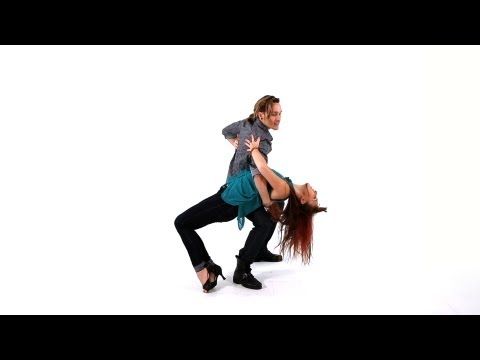 Basically, real passionaries of the dance community are ready to openly talk, discuss and support the development of dance in every possible way. Universal principles and the ideas they articulate have a much longer and more practical perspective than meets the eye.
Basically, real passionaries of the dance community are ready to openly talk, discuss and support the development of dance in every possible way. Universal principles and the ideas they articulate have a much longer and more practical perspective than meets the eye.
Accept that, for example, behind the words "listen to your partner" is not only a beautiful metaphor, but also a practical skill to literally listen to your partner. At the same time, always treat every thought, even the most respected teacher, as a private opinion.
Your skill will lie in finding the scope of the idea even in conflicting opinions. Most often, the contradiction is speculative and the truth lies in the angle of perception or situationality.
Your dancing growth will stop sooner or later. This can happen at the level of three basic steps or years of experience in teaching and show performances. Regardless of your level, the suggested 12 life hacks can get you off the ground and greatly accelerate your dance growth.


